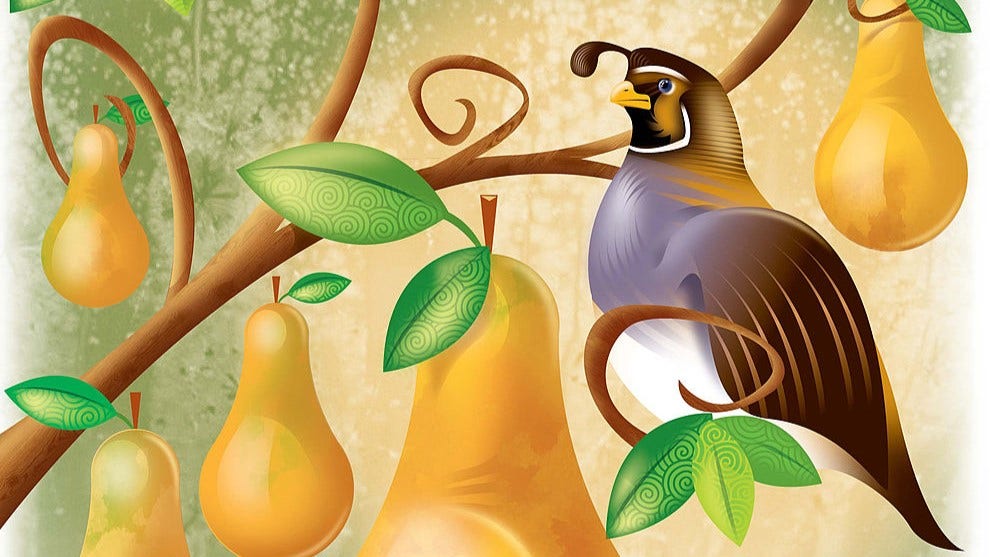The classic Christmas carol, “The Twelve Days of Christmas,” transcends its festive cheer to serve as a unique, albeit whimsical, barometer of economic trends. PNC Bank, along with other financial institutions, annually calculates the present-day cost of bestowing all the gifts enumerated in the song, creating a playful “Christmas Price Index.” This index provides a fascinating snapshot of inflation, revealing how the prices of everything from pear trees to drummers fluctuate year over year. In 2024, PNC’s index indicated a 5.4% overall increase compared to 2023, bringing the total cost to nearly $50,000. This figure highlights the pervasive impact of inflation on consumer goods and services, even within the context of this lighthearted tradition. Furthermore, Swyft Filings, a Texas-based company, emphasized the regional variations in these costs, attributing the differences to state-specific taxes and regulations. Their analysis identified California, Hawaii, and Washington as the priciest states for procuring the twelve days’ worth of gifts, while Arkansas, Mississippi, and Alabama offered the most budget-friendly options.
Delving into the individual gift categories, the costs associated with hired performers, such as drummers and pipers, experienced significant increases, largely attributed to rising wages. PNC estimated the cost of twelve drummers at $4,017, a 15.6% surge from the previous year, and eleven pipers saw a similar rise, reaching $3,715. These figures reflect the broader trend of wage inflation affecting the service sector. The most extravagant item on the list, ten “Lords-a-Leaping,” interpreted as hired performers rather than literal nobility, soared to $15,579.65, a 7.2% jump from 2023. Similarly, “Nine Ladies Dancing,” envisioned as a professional dance troupe, cost $8,557, marking a 3% increase. These entertainment-related expenses contribute significantly to the overall cost of the twelve days of gifts.
The prices of live animals, another prominent component of the carol, also displayed notable fluctuations. Seven swans, known for their elegance and rarity, remained steady at over $13,000, while six geese-a-laying saw a 15% increase, reaching $900. The cost of two turtledoves, symbolic of love and friendship, held firm at $750, reflecting their status as a threatened species. Meanwhile, the humble partridge in a pear tree experienced a slight price bump, with the pear tree itself accounting for the increase, while the partridge remained constant. This combination of stable and fluctuating prices among the animal gifts further illustrates the complex interplay of factors influencing the overall cost.
Beyond live animals and performers, other gift categories offer insights into specific market trends. The five gold rings, a symbol of enduring value, were estimated at $1,245, subject to variations based on carat, size, and craftsmanship. Four calling birds, or perhaps colly birds (blackbirds), remained unchanged at just under $600. Three French hens experienced a modest 5% increase, costing approximately $347, influenced by the market value of poultry. These variations highlight the impact of specific market forces on each individual gift item.
The milkmaids, representing the cost of milk, remained unchanged at $58, despite the fluctuating prices of dairy products in recent months. This stability within the index likely reflects a simplification for calculation purposes rather than actual market conditions. The overall cost of the “Twelve Days of Christmas” gifts has increased by a remarkable 133% over the past four decades, according to PNC. This long-term trend underscores the cumulative impact of inflation over time, particularly on wage-dependent services. Furthermore, if one were to purchase all 364 gifts represented in the song, the total cost would reach a staggering $209,272, a 3.6% increase from 2023.
PNC attributes the persistent price increases to the lingering effects of pandemic-era inflation, even five years later. This “inflation hangover,” as they term it, continues to influence markets and contribute to the rising cost of goods and services. Moreover, online purchases of these items tend to be more expensive than in-store purchases due to added shipping costs. This observation reflects the broader trend of online retail pricing, where convenience often comes at a premium. The PNC Christmas Price Index, while a lighthearted exercise, provides a tangible illustration of economic forces at play, demonstrating how inflation affects even the most whimsical of traditions. By tracking the cost of these twelve days of gifts, PNC offers a unique and engaging lens through which to understand the complex dynamics of the modern economy.


